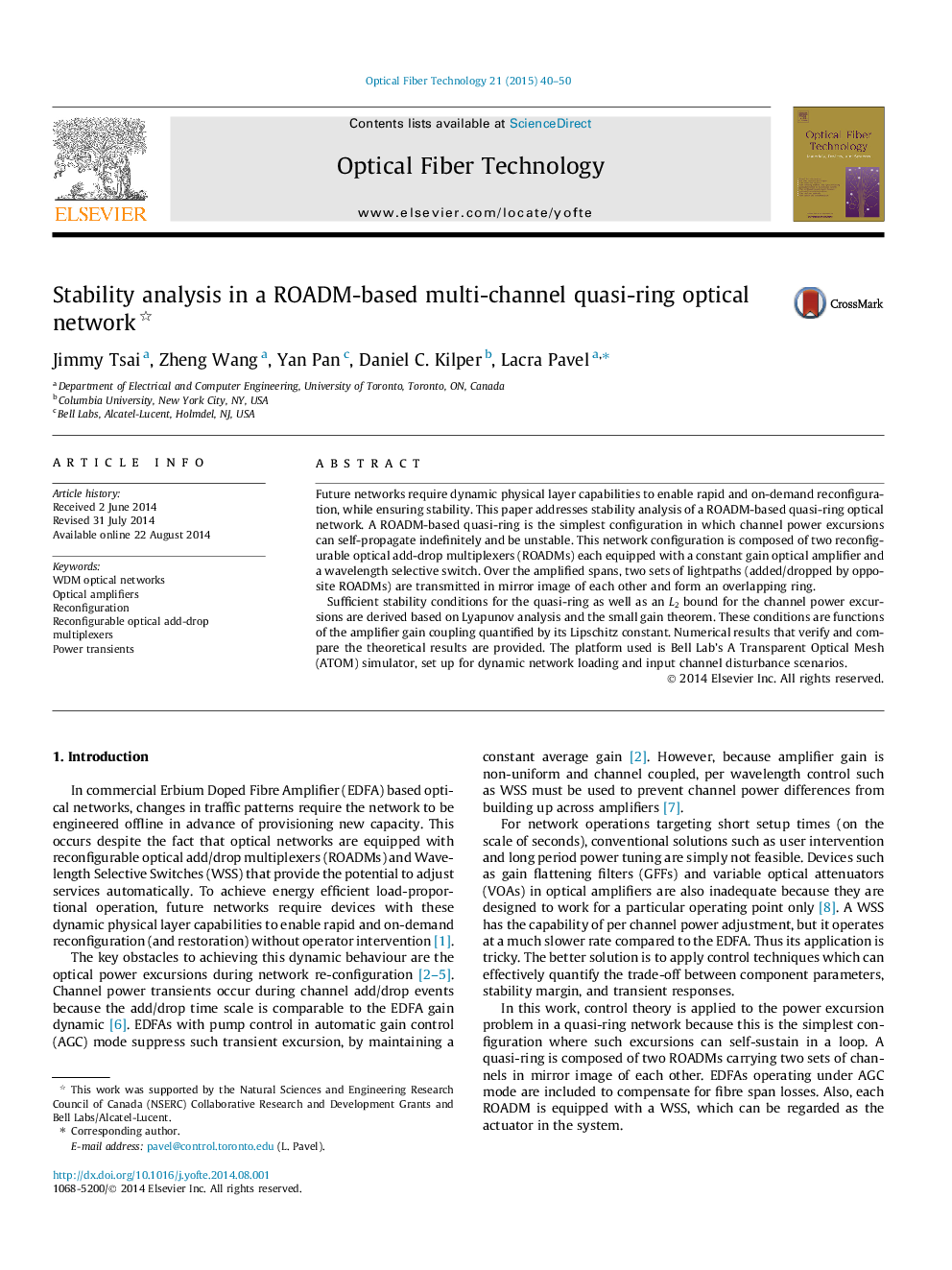| کد مقاله | کد نشریه | سال انتشار | مقاله انگلیسی | نسخه تمام متن |
|---|---|---|---|---|
| 463842 | 697247 | 2015 | 11 صفحه PDF | دانلود رایگان |

• We perform stability analysis of a ROADM-based quasi-ring optical network.
• We model and find the Lipschitz constant of an EDFA static gain map.
• We find a sufficient condition for the stability of the multi-channel quasi-ring.
• The theoretical results are numerically verified on Bell Lab’s ATOM simulator.
Future networks require dynamic physical layer capabilities to enable rapid and on-demand reconfiguration, while ensuring stability. This paper addresses stability analysis of a ROADM-based quasi-ring optical network. A ROADM-based quasi-ring is the simplest configuration in which channel power excursions can self-propagate indefinitely and be unstable. This network configuration is composed of two reconfigurable optical add-drop multiplexers (ROADMs) each equipped with a constant gain optical amplifier and a wavelength selective switch. Over the amplified spans, two sets of lightpaths (added/dropped by opposite ROADMs) are transmitted in mirror image of each other and form an overlapping ring.Sufficient stability conditions for the quasi-ring as well as an L2L2 bound for the channel power excursions are derived based on Lyapunov analysis and the small gain theorem. These conditions are functions of the amplifier gain coupling quantified by its Lipschitz constant. Numerical results that verify and compare the theoretical results are provided. The platform used is Bell Lab’s A Transparent Optical Mesh (ATOM) simulator, set up for dynamic network loading and input channel disturbance scenarios.
Journal: Optical Fiber Technology - Volume 21, January 2015, Pages 40–50